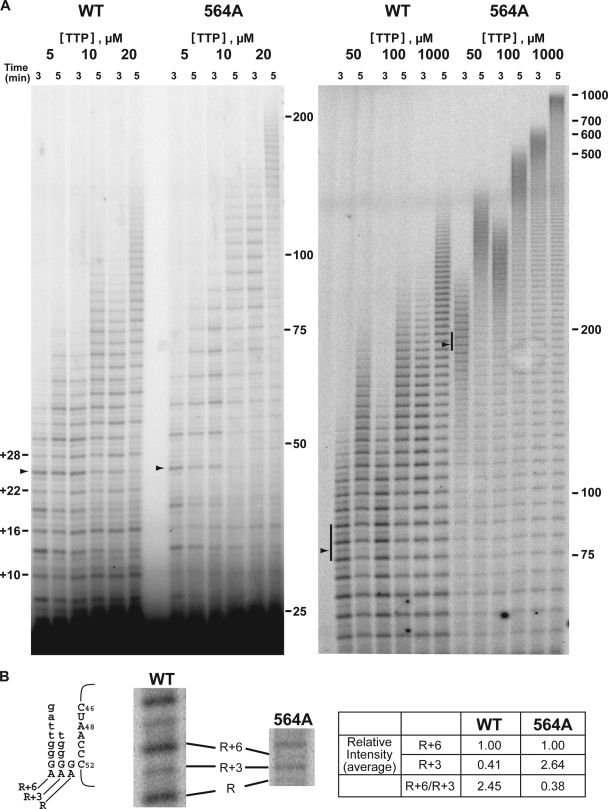FIG. 7.
Competitive primer challenge assay with hTERT T-motif mutants and different TTP concentrations. (A) Primer extension synthesis by wild-type and T564A telomerases was measured in primer extension reaction mixtures containing 1 mM dATP and 1 mM dGTP in the presence of increasing concentrations of TTP. Postchase aliquots were taken at 3 and 5 min and analyzed via PAGE (left gel, primer extension reaction mixtures with 5 to 20 μM TTP on 8% gel; right gel, primer extension reaction mixtures with 50 to 1,000 μM TTP on 4% gel). The black arrowheads indicate product accumulation prior to copying template residue A48. Regions of active polymerization (12) for the wild-type telomerase (containing the 9th and 10th repeats) and 564A telomerase (containing the 26th and 27th repeats) are indicated by a black bar. The numbers to the left of the gels (+4, +10, etc.) indicate positions of products corresponding to the end of each round of template copying. Marker sizes (in nucleotides) are indicated to the right of the gels. (B) Enlarged view of active polymerization regions marked in panel A. Schematic diagram indicates alignments of R + 3 and R + 6 major products with the template RNA. Nucleotides added during each round of primer elongation are shown in lowercase type. hTR nucleotide positions are indicated next to the template sequence. The average relative band intensities of the R + 3 and R + 6 products in the two repeats shown were quantified via phosphorimaging.

